Euro physique
> Mmemichel
Ressources pour enseigner la physique chimie en anglais
National Geographic. Science, Space and Technology News 2019. Traducteur. Science, Space and Technology News 2019. 2.5: Preparing Solutions. Preparing a solution of known concentration is perhaps the most common activity in any analytical lab.

Lexique français-anglais de physique-chimie. Connecting educators to what works. Balanceur d’équation chimique SO2 + H2O = H2SO4 + H2. Instructions Pour balancer une équation chimique, entrez une équation d’une réaction chimique et appuyez sur le bouton Balancer.
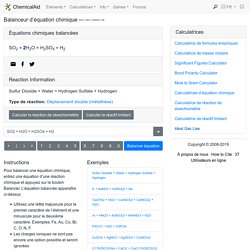
The Effects of Acid Rain on Monuments. Acid rain, first recognized in Sweden in 1872, was considered a local problem for a long time.
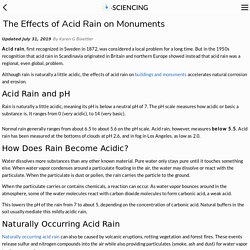
But in the 1950s recognition that acid rain in Scandinavia originated in Britain and northern Europe showed instead that acid rain was a regional, even global, problem. Although rain is naturally a little acidic, the effects of acid rain on buildings and monuments accelerates natural corrosion and erosion. Acid Rain and pH. NASA Space Place – NASA Science for Kids. Black Hole Rescue!

What are Black Holes Anyway?
What Is a Black Hole?
An artist's drawing a black hole named Cygnus X-1. It formed when a large star caved in. This black hole pulls matter from blue star beside it. Credits: NASA/CXC/M.Weiss An artist's drawing shows the current view of the Milky Way galaxy. Scientific evidence shows that in the middle of the Milky Way is a supermassive black hole.
Schrödinger’s Cat: Explained. Erwin Schrödinger was born in Vienna on August 12, 1887 and was awarded the Nobel Prize in Physics in 1933.

Graphs: Vocabulary – Writefix.com. You need to know some special vocabulary for graphs.
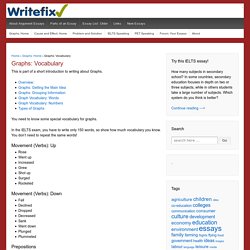
In the IELTS exam, you have to write only 150 words, so show how much vocabulary you know. You don’t need to repeat the same words! Movement (Verbs): Up. What Is the Difference Between Weight and Mass?
The terms "mass" and "weight" are used interchangeably in ordinary conversation, but the two words don't mean the same thing.
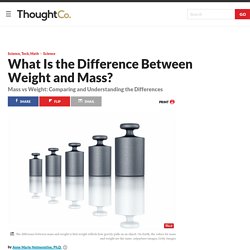
The difference between mass and weight is that mass is the amount of matter in a material while weight is a measure of how the force of gravity acts upon that mass. Mass is the measure of the amount of matter in a body.
10.E: Acids and Bases (Exercises)
Preparing Chemical Solutions. Science. Soap - how does it get things clean?
How does soap work?

We showed you how to make a soap sculpture. It looks pretty cool, but do you know how soap works? Try this experiment to find out.
Chemists make breakthrough on road to creating a rechargeable lithium-oxygen battery. Chemists from the University of Waterloo have successfully resolved two of the most challenging issues surrounding lithium-oxygen batteries, and in the process created a working battery with near 100 per cent coulombic efficiency.

Colours of light. Light is made up of wavelengths of light, and each wavelength1 is a particular colour.
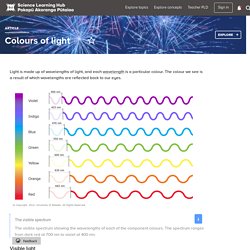
The colour we see is a result of which wavelengths are reflected back to our eyes. The visible spectrum The visible spectrum showing the wavelengths of each of the component colours. The spectrum ranges from dark red at 700 nm to violet at 400 nm. Visible light. Chemistry for Kids: Chemistry Lab Equipment. Science >> Chemistry for Kids. Chemistry For Kids - 35+ Resources, Experiments, Lessons and Activities. Chemistry Activities and Science Experiments for Kids. Chemistry is cool and we have the coolest chemistry activities for kids to share with you. Just like our awesome physics activities, we decided we needed to put together a chemistry experiments checklist for you.
BBC Bitesize - GCSE Chemistry (Single Science)
Writing Chemical Equations. Learning Objective Identify the symbols used to represent the states of matter in a chemical equation. Key Points In a chemical equation, the reactants are written on the left, and the products are written on the right.The coefficients next to the symbols of entities indicate the number of moles of a substance produced or used in the chemical reaction.The reactants and products are separated by an arrow, usually read aloud as “yields.”Chemical equations should contain information about the state properties of products and reactants, whether aqueous (dissolved in water — aq), solid (s), liquid (l), or gas (g).
Terms productThe compounds produced by a chemical reaction.reactantThe starting materials in a chemical reaction.chemical equationA symbolic representation of a chemical reaction; reactants are represented on the left and products on the right.
Easy Method to Prepare a Chemical Solution. Carbonation Countdown: The Effect of Temperature on Reaction Time. Key concepts Chemical reactions Molecules Carbonation Temperature Introduction Have you ever wondered why bubbles form when an Alka-Seltzer tablet is dropped into water? If you've ever tried it, you've seen that the tablet fizzes furiously. The moment the tablet starts dissolving a chemical reaction occurs that releases carbon dioxide gas. This is what comprises the bubbles. Some factors can change how quickly the carbon dioxide gas is produced, which consequently affect how furiously the tablet fizzes.
'That' or 'which'?
Using the kinetic energy equation (practice)
Kinetic Energy. Kinetic energy is the energy of motion.
7: Work, Energy, and Energy Resources (Exercises) - Physics LibreTexts.
Video premiere
Video seconde. 10 Rules for Writing Numbers and Numerals. BBC Bitesize - GCSE Maths - Standard form - AQA - Revision 1. BBC Learning English - BBC Learning English home page. BBC Bitesize - Higher Physics. BBC Bitesize - GCSE Physics (Single Science)
BBC Learning English - BBC Learning English home page.
Science Experiments. Science for Kids - Fun Experiments, Cool Facts, Online Games, Activities, Projects, Ideas, Technology. Science in School. Scientix - com sci educ in Eur. AMAZING WORLD OF SCIENCE WITH MR. GREEN - Home. ESS Topic 6.3: Photochemical Smog - AMAZING WORLD OF SCIENCE WITH MR. GREEN. Image from www.igbp.net Air pollution is the introduction of particulates, biological materials, or other harmful materials into the Earth's atmosphere, possibly causing disease, death to humans, damage to other living organisms such as food crops, or the natural or built environment.It is estimated that more than 1 billion people are exposed to outdoor air pollution annually.
Urban air pollution is linked to up to 1 million premature deaths and 1 million pre-native deaths each year. Urban air pollution is estimated to cost approximately 2% of GDP in developed countries and 5% in developing countries. Rapid urbanisation has resulted in increasing urban air pollution in major cities, especially in developing countries. Significant Ideas Big questions:To what extent have the solutions emerging from this topic been directed at preventing environmental impacts, limiting the extent of the environmental impacts, or restoring systems in which environmental impacts have already occurred?
Live Science: The Most Interesting Articles, Mysteries & Discoveries.
Science Daily: News & Articles in Science, Health, Environment & Technology. English, Biology. A-level physics AS A2 AQA GCE. Who invented the laser?
Dictionary for German, French, Spanish, and more. Meanings and Definitions of Words at Dictionary.com.
Translations, Definitions and Pronunciations. Definitions, Translations and Pronunciations.










